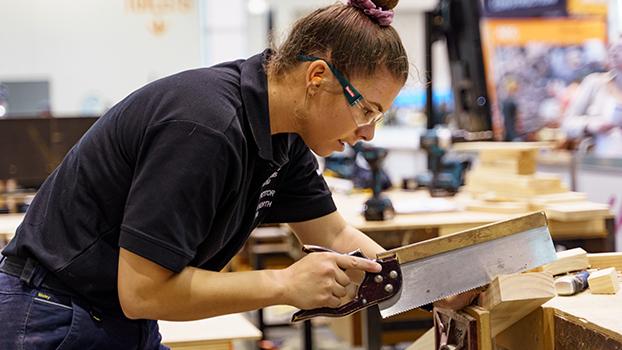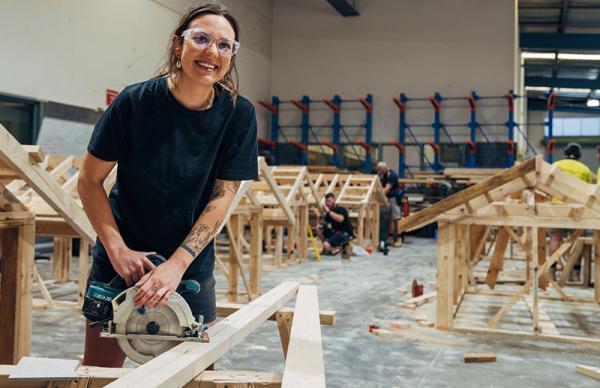
Cabinetmaker
Cabinetmakers use hand and machine skills to build commercial or traditional style furniture. They work from designs and specifications to measure, cut, join and carve wood and other timber materials. This is done using a wide variety of tools and equipment. Cabinetmakers may use imported timbers or native Western Australian timbers, such as Jarrah and Marri. Cabinetmakers may produce mass market furniture and fixtures, create commissioned one-off pieces, or restore antiques.
Working conditions
Cabinetmakers work in large factories or small workshops that are frequently noisy and dusty. They may use glues, and paints and varnishes, which can release harsh fumes. They are almost always standing, and often have to undertake heavy lifting. If they are self-employed or work for a small business that does commission or restoration work, cabinetmakers will often deal with the public.
Tools and technologies
Cabinetmakers use hand and power tools, but may also use complex computerised equipment that are part or wholly automated. They also use very precise measuring equipment. Due to the nature of their working conditions, they often need to wear protective shoes, earmuffs, goggles and masks.
Education and training
To become a cabinetmaker, you need to undertake an apprenticeship in cabinet maker or furniture maker. The cabinet maker apprenticeship usually takes 42 months to complete and is available as a school-based apprenticeship. The furniture maker apprenticeship usually takes 42 months to complete and is available as a school-based apprenticeship.

Free support and assistance
Your local jobs and Skills Centre can provide free information, support and assistance to help you decide on the best training options to meet your goals.
Disclaimer
The information presented on the occupation profiles within this website is offered as a guide only.


